Milletimizin Corona virüsü salgınına karşı verdiği bu amansız mücadeleyi kazanabilmesi için, önce kendi evimizin önünü süpürerek ailemize ve çevremize örnek olmamız gerekiyor.
Ailenize olan sevginin,
kendinize duyduğunuz saygının,
dostlarınıza ve çevrenize verdiğiniz değerin,
Milletimize olan bağlılığın ve sorumluluğun gereğini yapın
ve
LÜTFEN EVDE KALIN…
Ayrıca, vaka sayısının artması moralinizi bozmasın, eğer alınan tedbirlerin uygulanmasına elbirliğiyle katkı sağlarsak, salgının daha fazla yayılmadan önlenmesi mümkün olacaktır.
Coronadan ırak, sağlıklı günler diliyorum.
Zafer KARADAĞ
17 Mart 2020, Taşkent
***
İŞYERİNİZİ NASIL COVID-19’A HAZIR HALE GETİREBİLİRSİNİZ
(3 Mart 2020 tarihli Dünya Sağlık Örgütü duyurusundan seçerek çevrilmiştir)
COVID-19 nasıl yayılır?
COVID-19’a yakalanan bir kişi öksürdüğünde ve soluk verdiğinde enfekte (virüslü) sıvı damlacıkları yayar. Bu damlacıkların çoğu etraftaki desk, masa veya telefon gibi yüzey ve nesnelerin üzerine düşer. Diğer insanlar bu şekilde kontamine olmuş yüzeylere veya nesnelere elleriyle dokunup ardından da göz, burun veya ağızlarına ellerini götürerek COVID-19’a yakalanabilirler. COVID-19’lu bir kişiye bir metreden daha yakın mesafede durmaları halinde onların öksürükleri veya nefesleriyle saçılan damlacıkları soluyarak da hastalığa yakalanabilirler. Diğer bir deyişe, COVID-19, gribe benzer bir şekilde yayılır. COVID-19’la enfekte olan kişilerin çoğu hafif belirtiler gösterir ve iyileşir. Ancak bazıları hastalığı daha ağır geçirir ve hastaneye yatması gerekebilir.
İşyerinde COVID-19 yayılmasını önlemek için basit önlemler
İşverenler, henüz içinde bulundukları topluma COVID-19 ulaşmadıysa dahi bu önlemleri almaya başlamalıdır:
İşyerinin temiz ve hijyenik olmasını sağlayın
Yüzeyler (örneğin deskler, tezgahlar ve masalar) ve nesneler (telefonlar, bilgisayar klavyeleri) dezenfektanlarla düzenli olarak silinmelidir. Neden? Çünkü çalışanların ve hizmeti alanların kontamine yüzeylere dokunması, COVID-19’un temel yayılma yollarından biridir.
Çalışanlar ve hizmeti alanların düzenli ve kapsamlı biçimde el yıkamasını sağlayın/ destekleyin.
İşyerinde görünür yerlere el temizleyicileri yerleştirin. Bunların düzenli olarak doldurulmasını sağlayın.
El yıkamaya teşvik eden afişler asın.
Bunları diğer iletişim önlemleriyle birleştirin: iş sağlığı ve güvenliği çalışanlarının rehberliği, toplantılarda bilgilendirmeler ve intranet üzerinden el yıkamayı teşvik edici bilgiler.
Çalışanların ve hizmeti alanların ellerini su ve sabunla yıkayabilecekleri yerlere erişimlerinin olmasını sağlayın. Neden? Çünkü el yıkamak ellerdeki virüsü öldürür ve COVID-19’un yayılmasını önler.
İşyerinde iyi solunum hijyeni sağlayın
Solunum hijyenini teşvik eden afişler asın. Bunları diğer iletişim önlemleriyle birleştirin: iş sağlığı ve güvenliği çalışanlarının rehberliği, toplantılarda bilgilendirmeler ve intranet üzerinden el yıkamayı teşvik edici bilgiler
Burnu akan veya öksürenler için işyerinde normal cerrahi maske ve/veya kağıt mendil bulunmasını sağlayın, ayrıca bunların atılması için kapaklı çöp kovalarının olmasını sağlayın. Neden? İyi solunum hijyeni COVID-19’un yayılmasını önler.
Seyahat önlemlerine uyulmasını sağlayın
Çalışanlarınıza ve hizmeti alanlara, eğer toplumunuzda COVID-19 yayılmaya başladıysa, hafif öksürük veya hafif ateşlerinin olması halinde evlerinde kalmaları gerektiği konusunda bilgilendirin. Enfeksiyon belirtilerini baskılayabilecek basit ilaçlardan (parasetamol, ibuprofen, vb.) kullanmaları halinde de evde kalmalıdırlar (veya evden çalışmalıdırlar).
COVID-19’a ait hafif belirtiler gösteren olguların evde kalmaları gerektiği mesajını iletmeye ve teşvik etmeye devam edin.
İşyerinize bu mesajı içeren afişler asın. Bu mesajı işyerinizdeki diğer iletişim kanallarıyla kombine edin.
İşverenle bu sürenin hastalık izninden sayılacağı konusunu netleştirin.
Toplantı ve etkinlik düzenlerken COVID-19 riskini yönetme
İşverenler ve organizatörler neden COVID-19’u göz önünde bulundurmalıdır?
Toplantı ve etkinlik düzenleyenler potansiyel COVID-19 riskini göz önünde bulundurmalıdır çünkü: Toplantınıza veya etkinliğinize katılanların bilmeyerek COVID-19’u toplantıya getirme riski bulunmaktadır. Diğerleri de bilmeden COVID-19’a maruz kalabilirler.
COVID-19 birçok kişi için hafif bir hastalık olsa da, bazılarını ağır hasta edebilir. COVID-19’a yakalanan yaklaşık her 5 kişiden birinin hastanede tedavi edilmesi gerekmektedir.
COVID-19 riskini önlemek veya azaltmak için anahtar noktalar
Toplantı veya etkinlik ÖNCESİNDE
Toplantıyı düzenlediğiniz toplumdaki otoritelerin önerilerini kontrol edin ve dikkate alın.
Toplantı veya etkinliğinizde enfeksiyonu önlemek için bir hazırlık planı oluşturun.
Yüzyüze bir toplantı veya etkinliğin gerekliliğini gözden geçirin. Yerine bir telekonferans veya çevrimiçi etkinlikle yapılabilir mi?
Toplantı, daha az kişinin katılmasını sağlayacak şekilde küçültülebilir mi?
Halk sağlığı ve sağlık otoritesiyle ile ilgili bilgi ve iletişim kanallarını önceden kontrol ediniz ve doğrulayınız.
Önceden tüm katılımcılara yetecek miktarda mendil ve el temizleyicisi de dahil olmak üzere malzeme ve ekipman temin ediniz. Solunumsal belirtisi ortaya çıkan bir kişi olursa ona sunabilecek cerrahi maske bulundurunuz.
COVID-19’un dolaşımda olduğu yerleri aktif olarak izleyin. Katılımcıları herhangi bir belirtileri varsa veya iyi hissetmiyorlarsa katılmamaları gerektiğine dair bilgilendiriniz.
Etkinlikteki tüm katılımcıların, düzenleyicilerin, ikram sunanların ve ziyaretçilerin iletişim bilgilerini temin ediniz: cep telefonu numarası, e-posta adresleri ve kaldıkları yer. Herhangi bir katılımcı bulaşıcı hastalığa yakalanırsa bu bilgilerin yerel sağlık otoritesine teslim edileceğini açıkça belirtin. Eğer bunu kabul etmiyorlarsa toplantıya veya etkinliğe katılamazlar.
Toplantı sırasında bir kişinin COVID-19 belirtileriyle (kuru öksürük, ateş, halsizlik) hastalanması halinde bir yanıt planı geliştirin ve üzerinde uzlaşın. Bu plan en azından şunları içermelidir:
Kendini iyi hissetmeyen veya belirtileri olan kişinin güvenle izole edilebileceği bir oda veya alan belirleyin.
Oradan güvenle bir sağlık kuruluşuna transferiyle ilgili bir planınız olsun.
Eğer bir katılımcı, personel veya hizmet sunucu toplantı sırasında veya hemen sonrasında COVID-19 için test pozitif çıkarsa neler yapacağınızı bilmeniz.
Sağlık hizmeti aldığınız kurumla bu plan konusunda önceden anlaşmanız.
Toplantı veya etkinlik SIRASINDA
Tercihen hem sözlü hem yazılı olarak COVID-19 ile ilgili ve düzenleyenlerin almakta olduğu önlemlerle ilgili bilgilendirin.
Güven oluşturun. Örneğin, ısınma tekniği olarak birbirine dokunmadan selamlaşmanın yollarının pratiğini yapın.
Toplantı veya etkinlikte katılımcıların ellerini düzenli olarak yıkaması veya alkol bazlı temizleyicilerle temizlemesi için teşvik edin.
Katılımcılar öksürdüğünde veya hapşırdığında dirsekleriyle veya bir mendille yüzlerini kapatmaları için katılımcıları teşvik edin.
Katılımcıların ulaşabilecekleri bir iletişim bilgisi veya 112’nin numarasını verin.
Toplantı mekânında alkol bazlı el temizleyicilerinin yerlerini gösterin.
Yer varsa katılımcıların birbirlerinden birer metre ötede oturacakları şekilde sandalyeleri yerleştirin.
Ortamın iyi havalandırılmasını sağlamak için pencereleri ve kapıları mümkün oldukça açık tutun.
Bir kişi kendini iyi hissetmezse, hazırlık planınızı uygulayın veya 112’yi arayın.
Bölgenizdeki duruma bağlı olarak veya katılımcının yakın tarihli seyahat öyküsüne dayanarak, katılımcıyı izolasyon odasına yerleştirin. Kişiye bir maske verin ki evine veya değerlendirileceği merkeze güvenle gidebilsin.
Bütün katılımcılara ortamdaki önlemlerle ilgili işbirlikleri için teşekkür edin.
Toplantı SONRASINDA
Tüm katılımcıların isim ve iletişim bilgilerini en az bir ay süreyle saklayın. Bir veya birkaç katılımcı etkinlikten kısa süre sonra hastalanırsa bu sayede halk sağlığı otoriteleri maruz kalan kişilerle ilgili izlem yapabilecektir.
Eğer toplantı/etkinlik sırasında bir kişi COVID-19 kuşkusuyla izole edilirse, toplantıyı düzenleyen, tüm katılımcıları bu konuda bilgilendirmelidir. Kendilerini 14 gün boyunca belirtiler açısından takibetmeleri ve günde iki kez ateş ölçümü yapmaları önerilmelidir.
Eğer hafif bir öksürük veya hafif bir ateş (37.3 C ve daha fazla) ortaya çıksa bile evde kalmalı ve kendilerini izole etmelidirler. Bu, aile bireyleri dahil diğer kişilere 1 metreden daha yakın durmaktan kaçınmayı kapsamaktadır. Ayrıca kendi sağlık hizmet kuruluşlarını veya yerel halk sağlığı birimini arayıp yakın tarihteki seyahat ve belirtileriyle ilgili ayrıntıları bildirmelidirler.
Bütün katılımcılara ortamdaki önlemlerle ilgili işbirlikleri için teşekkür edin.
Çalışanlardan biri seyahatten dönünce:
COVID-19’un yayılmakta olduğu bir bölgeden dönen çalışanlar kendilerini 14 gün boyunca belirtiler açısından izlemeleri ve günde iki kez ateşlerini ölçmelidir. Eğer hafif bir öksürük veya hafif bir ateş (37.3 C ve daha fazla) ortaya çıksa bile evde kalmalı ve kendilerini izole etmelidirler. Bu, aile bireyleri dahil diğer kişilere 1 metreden daha yakın durmaktan kaçınmayı kapsamaktadır. Ayrıca kendi sağlık hizmet kuruluşlarını veya yerel halk sağlığı birimini arayıp yakın tarihteki seyahat ve belirtileriyle ilgili ayrıntıları bildirmelidirler.
Unutmayın: Şimdi COVID-19’a hazırlanma zamanı. Basit önlemler ve planlama, büyük değişiklik yaratabilir. Şimdi eyleme geçmeniz çalışanlarınızı ve işinizi koruyacaktır.
Kaynak: www.who.int/docs/default-source/coronaviruse/getting-workplace-ready-for-covid-19.pdf?sfvrsn=359a81e7_6
3 March 2020
Getting your workplace ready for COVID-19
In January 2020 the World Health Organization (WHO) declared the outbreak of a new coronavirus disease in Hubei Province, China to be a Public Health Emergency of International Concern. WHO stated there is a high risk of the 2019 coronavirus disease (COVID-19) spreading to other countries around the world.
WHO and public health authorities around the world are taking action tocontain the COVID-19 outbreak. However, long term success cannot be taken for granted. All sections of our society –including businesses and employers –must play a role if we are to stop the spread of this disease.
How COVID-19 spreads
When someone who has COVID-19 coughs or exhales they release droplets of infected fluid. Most of these droplets fall on nearby surfaces and objects -such as desks, tables or telephones. People could catch COVID-19 by touching contaminated surfaces or objects –and then touching their eyes, nose or mouth. If they are standing within one meterof a person with COVID-19 they can catch it by breathing in droplets coughed out or exhaled by them. In other words, COVID-19 spreads in a similar way to flu. Most persons infected with COVID-19 experience mild symptoms and recover. However, some go on to experience more serious illness and may require hospital care. Risk of serious illness rises with age: people over 40 seem to be more vulnerable than those under 40. People with weakened immune systems and people with conditions such as diabetes, heart and lung disease are also more vulnerable to serious illness.
This document gives advice on:
1.Simple ways to prevent the spread of COVID-19 in your workplace
2.How to manage COVID-19 risks when organizing meetings &events
3.Things to consider when you and your employees travel
4.Getting your workplace ready in case COVID-19 arrives in your community
1.Simple ways to prevent the spread of COVID-19 in your workplace
The low-cost measures below will help prevent the spread of infections in your workplace, such as colds, flu and stomach bugs, and protect your customers, contractors and employees.
Employers should start doing these things now, even if COVID-19 has not arrived in the communities where they operate.They can already reduce working days lost due to illness and stop or slow the spread of COVID-19 if it arrives at one of your workplaces.
•Make sure your workplaces are clean and hygienic
oSurfaces (e.g. desks and tables) and objects (e.g. telephones, keyboards) need to be wiped with disinfectant regularly
oWhy? Because contamination on surfaces touched by employees and customers is one of the main ways that COVID-19 spreads
•Promote regular and thorough hand-washing by employees, contractors and customers
oPut sanitizing hand rub dispensers in prominent places around the workplace. Make sure these dispensers are regularly refilled
oDisplay posters promoting hand-washing –ask your local public health authority for these or look on www.WHO.int
oCombine this with other communication measures such as offering guidance from occupational health and safety officers, briefings at meetings and information on the intranet to promote hand-washing
oMake sure that staff, contractors and customers have access to places where they can wash their hands with soap and water
oWhy? Because washing kills the virus on your hands and prevents the spread of COVID-19
•Promote good respiratory hygiene in the workplace
oDisplay posters promoting respiratory hygiene. Combine this with other communication measures such as offering guidance from occupational health and safety officers, briefing at meetings and information on the intranet etc.
oEnsure that face masks1and / or paper tissues are available at your workplaces, for those who develop a runny nose or cough at work, along with closed bins for hygienically disposing of them. (Ordinary surgical face masks rather than N95 face masks)
oWhy? Because good respiratory hygiene prevents the spread of COVID-19
•Advise employees and contractors to consult national travel advice before going on business trips.
•Brief your employees, contractors and customers that if COVID-19 starts spreading in your community anyone with even a mild cough orlow-gradefever (37.3 C or more)needs to stay at home. They should also stay home (or work from home) if they have had to take simple medications, such as paracetamol/acetaminophen, ibuprofen or aspirin, which may mask symptoms of infection
oKeep communicating and promoting the message that peopleneed to stay at home even if they have just mild symptoms of COVID-19.
oDisplay posters with this message in your workplaces. Combine this with other communication channels commonly used in your organization or business.
oYour occupational health services, local public health authority or other partners may have developed campaign materials to promote this message
oMake clear to employees that they will be able to count this time off as sick leave.
2.How to manage COVID-19 risk when organizing meetings & events
Why do employers and organizers need to think about COVID-19?
Organizers of meetings and events needto think about the potential risk from COVID-19 because:
•There is a risk that people attending your meeting or event might be unwittingly bringing the COVID-19 virus to the meeting. Others might be unknowingly exposed to COVID-19.
•While COVID-19 is a milddisease for most people, it can make some very ill. Around 1 in every 5 people who catch COVID-19 needs hospital treatment.
Key considerations to prevent or reduce COVID-19 risks
BEFORE the meeting or event
•Check the advice from the authorities in the community where you plan to hold the meeting or event. Follow their advice.
•Develop and agree a preparedness plan to prevent infection at your meeting or event.
oConsider whether a face-to-face meeting or event is needed. Could it be replaced by a teleconference or online event?
oCould the meeting or event be scaled down so that fewer people attend?
oEnsure and verify information and communication channels in advance with key partners such as public health and health care authorities.
oPre-order sufficient supplies and materials, including tissues and hand sanitizer for all participants. Have surgical masks available to offer anyone who develops respiratory symptoms.
oActively monitor where COVID-19 is circulating. Advise participants in advance that if they have any symptoms or feel unwell, they should not attend.
oMake sure all organizers, participants, caterers and visitors at the event provide contact details: mobile telephone number, email and address where they are staying. State clearly that their details will be shared with local public health authorities if any participant becomes ill with a suspected infectious disease. If they will not agree to this they cannot attend the event or meeting.
•Develop and agree a response plan in case someone at the meeting becomes ill with symptoms of COVID-19 (dry cough, fever, malaise). This plan should include at least:
oIdentify a room or area where someone who is feeling unwell or has symptoms can be safely isolated
oHave a plan for how they can be safely transferred from there to a health facility.
oKnow what to do if a meeting participant, staff memberor service provider tests positive for COVID-19during or just after the meeting
oAgree the plan in advance with your partnerhealthcare provider or health department.
DURING the meeting orevent
•Provide informationor a briefing, preferably both orally and in writing, on COVID-19 and the measures that organizers are taking to make this event safe for participants.
oBuild trust. For example, as an icebreaker, practice ways to say hello without touching.
oEncourage regular hand-washing or use of an alcohol rub by all participants at the meeting or event
oEncourage participants to cover their face with the bend of their elbow or a tissue if they cough or sneeze. Supply tissues and closed bins to dispose of them in.
oProvide contact details or a health hotline number that participants can call for advice or to give information.
•Display dispensers of alcohol-based hand rub prominently around the venue.
•If there is space, arrange seats so that participants are at least one meter apart.
•Open windows and doors whenever possible to make sure the venue is well ventilated.•If anyone who starts to feel unwell, follow your preparedness plan or call your hotline.
oDepending on the situation in your area, or recent travel of the participant, place the person in the isolation room. Offer the person a mask so they can get home safely, if appropriate, or to a designated assessment facility.
•Thank all participants for their cooperation with the provisions in place.
AFTER the meeting
1.Retain the names and contact details of all participants for at least one month. This will help public health authorities trace people who may have been exposed to COVID-19 if one or more participants become ill shortly after the event.
2.If someone at the meeting or event was isolated as a suspected COVID-19 case, the organizer should let all participants know this. They should be advised to monitor themselves for symptoms for 14 days and take their temperature twice a day.
3.If they develop even a mild cough or low-grade fever (i.e. a temperature of 37.3 C or more) they should stay at home and self-isolate. This means avoiding close contact (1 meter or nearer) with other people, including family members. They should also telephone their healthcare provider or the local public health department, giving them details of their recent travel and symptoms.
4.Thank all the participants for their cooperation with the provisions in place.
3.Things to consider when you and your employees travel
•Before traveling
oMake sure your organization and its employees have the latest information on areas where COVID-19 is spreading. You can find this at www.who.int/emergencies/diseases/novel-coronavirus-2019/situation-reports
oBased on the latest information, your organization should assess the benefits and risks related to upcoming travel plans.
oAvoid sending employees who may be at higher risk of serious illness (e.g. older employees and those withmedical conditionssuch as diabetes, heart and lung disease) to areas where COVID-19 is spreading.
oMake sure all persons travelling to locations reporting COVID-19 are briefed by a qualified professional (e.g. staff healthservices, health care provider or local public health partner)oConsider issuing employees who are about to travel with small bottles (under 100 CL) of alcohol-based hand rub. This can facilitate regular hand-washing.
•While traveling:
oEncourage employeesto wash their hands regularly and stay at least one meter away from people who are coughing or sneezing
oEnsure employees know what to do and who to contact if they feel ill while traveling.
oEnsure that your employees comply with instructions from local authorities where they are traveling. If, for example, they are told by local authorities not to go somewhere they should comply with this. Your employees should comply with any local restrictions on travel, movement or large gatherings.
•When youor your employees return from traveling:
oEmployees who have returned from an area where COVID-19 is spreading should monitor themselves for symptoms for 14 days and take their temperature twice a day.
oIf they develop even a mild cough or low grade fever (i.e. a temperature of 37.3 C or more) they should stay at home and self-isolate. Thismeans avoiding close contact (onemeter or nearer) with other people, including family members. They should also telephone their healthcare provider or the local public health department, giving them details of their recent travel and symptoms.
4.Getting your workplace ready in case COVID-19 arrives in your community
•Develop a plan of what to do if someone becomes ill with suspected COVID-19 at one of your workplaces
oThe plan should cover putting the ill person in a room or area where they are isolated from others in the workplace, limiting the number of people who have contact with the sick person and contacting the local health authorities.
oConsider how to identify persons who may be at risk, and support them, without inviting stigma and discrimination into your workplace. This could include persons who have recently travelled to an area reporting cases, or other personnel who have conditions that put them at higher risk of serious illness (e.g. diabetes, heart and lung disease, older age).
oTell your local public health authority you are developing the plan and seek their input.
•Promote regular teleworking across your organization. If there is an outbreak of COVID-19 in your community the health authorities may advise people to avoid public transport and crowded places. Teleworking will help your business keep operating while your employees stay safe.
•Develop a contingency and business continuity plan for an outbreak in the communities where your business operates
oThe plan will help prepare your organization for the possibility of an outbreak of COVID-19 in its workplaces or community. It may also be valid for other health emergencies
oThe plan should address how to keep your business running even if a significant number of employees, contractors and suppliers cannot come to your place of business -either due to local restrictions on travel or because they are ill.
oCommunicate to your employees and contractors about the plan and make sure they are aware of what they need to do –or not do –under the plan. Emphasize key points such as the importance of staying away from work even if they have only mild symptoms or have had to take simple medications (e.g. paracetamol, ibuprofen) which may mask the symptoms
oBe sure your plan addresses the mental health and social consequences of a case of COVID-19 in the workplace or in the community and offer information and support.
oFor small and medium-sized businesses without in-house staff health and welfare support, develop partnerships and plans with your local health and social service providers in advance of any emergency.
oYour local or national public health authority may be able to offer support and guidance in developing your plan.
Remember: Now is the time to prepare for COVID-19. Simple precautions and planning can make a big difference. Action now will help protect your employees and your business.
How to stay informed: Find the latest information from WHO on where COVID-19 is spreading: www.who.int/emergencies/diseases/novel-coronavirus-2019/situation-reports
Advice and guidance from WHO on COVID-19
www.who.int/emergencies/diseases/novel-coronavirus-2019
www.epi-win.com






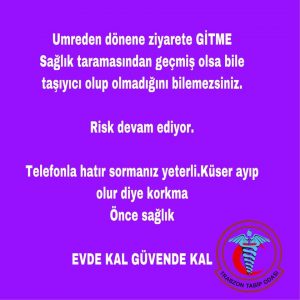


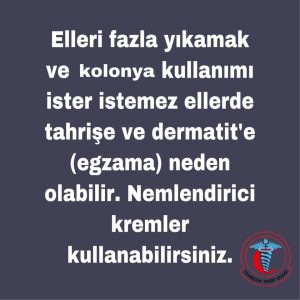
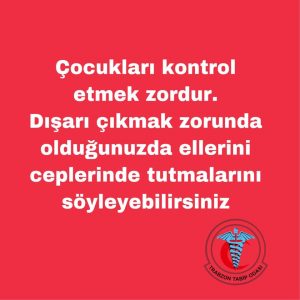
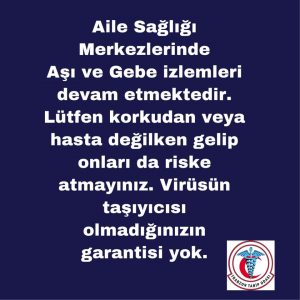




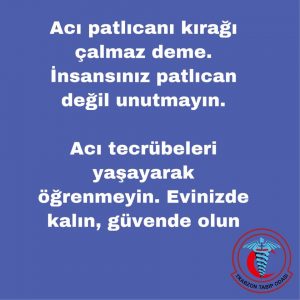
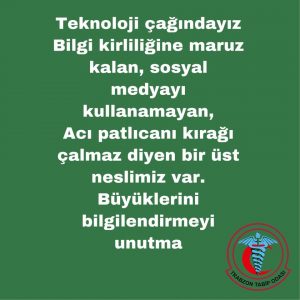
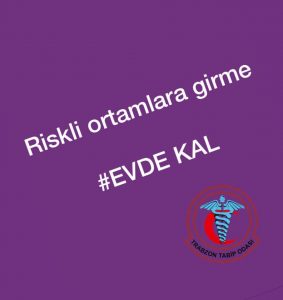
 Follow
Follow